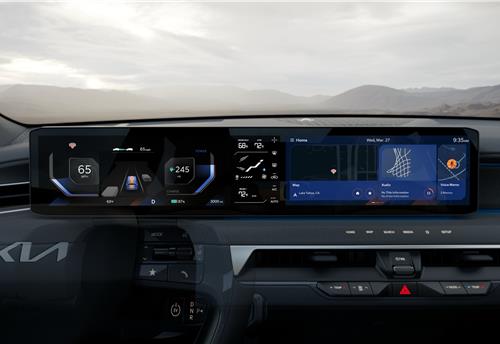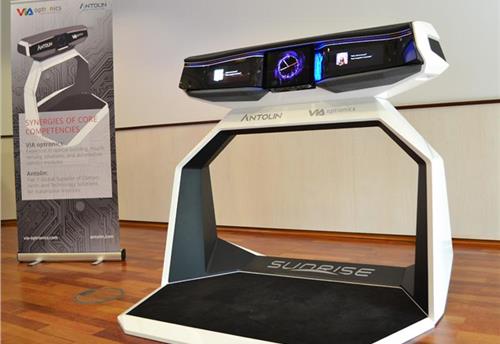Ford hits CO2 manufacturing emissions reduction goal eight years early
Ford cuts its manufacturing CO2 emissions by more than 3.4 million metric tons from 2010 to 2017 – equivalent to greenhouse gas emissions from more than 728,000 cars driven for one year.
It's an achievement to be proud of. In 2010, Ford’s Environmental Quality Office announced a goal – to reduce the company’s carbon dioxide emissions from manufacturing operations by 30 percent per vehicle produced by 2025.
Now as per the 2017-2018 Ford Sustainability Report, the company has hit the target twice as fast as expected. The results are dramatic, with a global manufacturing CO2 emissions reduction of more than 3.4 million metric tons from 2010 to 2017 – equivalent to greenhouse gas emissions from more than 728,000 passenger vehicles driven for one year.
“We are proud of the work we have done to achieve this goal,” said Bruce Hettle, group vice-president, manufacturing and labour affairs. “We’ve made several improvements to our manufacturing operations – from the lighting we use to plant consolidations – all of which played a role in dramatically reducing our CO2 footprint.”
Ford reduced its emissions footprint through energy conservation and efficiency changes at Ford’s manufacturing facilities, such as installing more than 100,000 LED light fixtures and updating paint operations.
“Painting operations use a large amount of energy,” said Andy Hobbs, director, environmental quality office. “Introducing technology that allows wet-on-wet paint application and eliminates a drying oven, in more plants has significantly decreased energy use while maintaining quality.”
Minimum Quantity Lubrication is another energy-reducing technology. In MQL, a machining tool is lubricated with a very small amount of oil sprayed directly on the tip of the tool in a finely atomised mist, instead of with a large quantity of coolant/water mixture.
Next target: increased use of renewable energy
Ford now is working on setting a new goal – this one, focused on renewable energy.
“We will continue to set ambitious goals and work to create innovative practices to achieve them,” said Hettle. “Our next strategy will focus on increasing Ford’s use of renewable energy while maintaining our energy efficiencies.”
Ford says it also remains focused on reducing vehicle emissions by doing its share to deliver on CO2 reductions consistent with the Paris Climate Accord. The company is charting its course for the future by investing $11 billion to put 40 hybrid and fully electric vehicle models on the road by 2022.
Bullish on electrification
In collaboration with the BMW Group, Daimler AG, and Volkswagen Group with Audi and Porsche, Ford is one of the founders of IONITY, a pan-European joint venture to develop a fast-charging network for electric vehicles.
Together, the goal of IONITY is to build 400 fast-charging stations in key European locations by 2020, with a charging capacity of 350 kW. This enables a significant reduction to charging times compared to existing systems. The build-up of 20 stations in multiple European countries began in 2017, with the first charging station in Germany becoming active in 2018. These efforts will support EV adoption, which will help to address climate change.
Green, clean and being seen
In addition to reaching the company’s ambitious goal of reducing manufacturing greenhouse gas emissions with a 32 per cent reduction, Ford makes around 300 parts from renewable materials, with eight sustainable materials featured in production vehicles: soy, wheat, rice, castor, kenaf (hibiscus), tree cellulose, jute and coconut. By using less energy, less waste and moving away from the use of fossil fuels, the company has achieved a 228 million pound reduction in CO2 since the switch to soybean-based foam in 2011 – the equivalent to the carbon capture by four million trees in one year.
RELATED ARTICLES
Marelli Talbros Chassis Systems wins Rs 1,000 crore business from European OEM
The order, to be executed over an eight-year period, is for the supply suspension arms tailored for both conventional in...
Kia launches customised NBA display themes for North American market
Display Themes is a customised service that supports a personalised vehicle experience, allowing users to customise the ...
Antolin and VIA Optronics unveil versatile vehicle cockpit concept
The Sunrise vehicle concept cockpit, which is engineered for seamless transitions between manual and autonomous driving ...





 By Autocar Pro News Desk
By Autocar Pro News Desk
 28 Jun 2018
28 Jun 2018
 1999 Views
1999 Views









